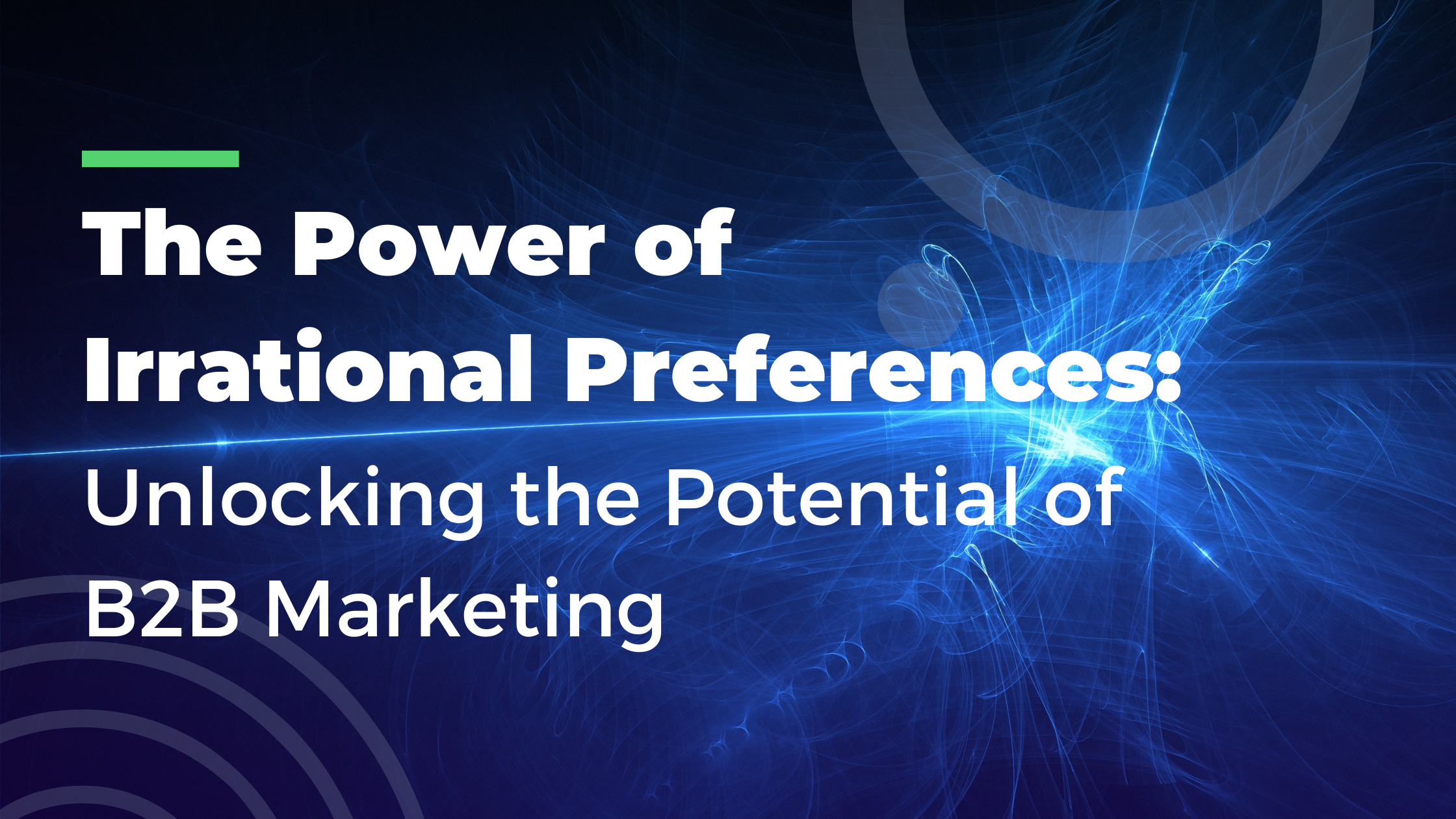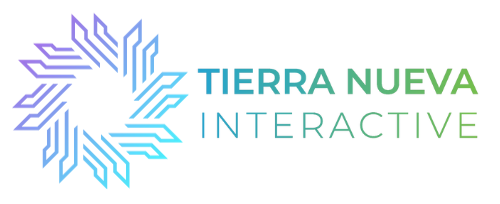The Power of Irrational Preferences: Unlocking the Potential of B2B Marketing

June 20, 2023 | Written By Joseph Reynoso, TNI | Published on Tierra Nueva Interactive
In B2B SaaS, a fascinating phenomenon often comes into play: the concept of irrational consumer preference. While it may seem counterintuitive, understanding and harnessing this phenomenon can unlock significant growth opportunities for demand generation teams. In this article, we’ll explore why irrational preference exists among B2B buyers, its connection to the broader macroeconomic climate, and effective strategies to influence and leverage this powerful force.
The Rationality Myth:
Traditionally, B2B buying decisions have been seen as purely rational, driven solely by logical considerations such as features, performance, and price. In competitive categories where buyers experience a “sea of sameness”, there can be no rational preference between identical products or services, but there may be irrational preference. Consumers become attached to the products or services of certain brands when the products of another would serve them just as well. Think about your affinity for the following SaaS products for example:
Gong vs Chorus
Outreach vs Salesloft
Apollo vs SeamlessAI
Research published by J.K. Galbraith in The Economic Journal almost 85 years ago shows that emotions and subjective perceptions play a crucial role in the decision-making process. In his article titled, Rational & Irrational Consumer Preferences, the author concludes that consumers are influenced by psychological biases and irrational preferences that can heavily sway their choices. And when viewed through the lens of B2B buying today, history sets the context for the present. That is to say, the past is prologue.
Understanding Irrational Preference:
Irrational preference refers to the tendency of B2B buyers to make decisions based on subjective factors rather than purely objective criteria. This can manifest as a preference for a particular brand, a personal connection with a sales rep, or even an emotional attachment to a product's design. By recognizing and tapping into these irrational preferences, demand generation teams can create powerful hooks that differentiate their offerings from competitors.
The Role of Trust and Perception:
In an increasingly interconnected world, trust and perception have become invaluable commodities. B2B buyers are more likely to gravitate towards vendors they trust and perceive as reliable partners, even if the objective differences between competing solutions are minimal. Building and nurturing trust through consistent messaging, stellar customer support, and a strong online presence can significantly influence the irrational preferences of software buyers.
The Impact of the Macro Economic Climate:
The broader macroeconomic climate plays a crucial role in shaping the irrational preferences of B2B software buyers. During periods of economic uncertainty, buyers may prioritize stability and risk aversion, gravitating towards established brands with a proven track record. Conversely, in times of economic prosperity, buyers may be more open to innovative and disruptive solutions, seeking to gain a competitive edge. By understanding the prevailing macroeconomic conditions, it’s possible to tailor your messaging and positioning to align with the current preferences of B2B buyers.
Influencing Irrational Preferences:
To effectively influence irrational preferences, demand generation teams should employ a strategic approach that blends emotional appeal with rational arguments. Here are some key strategies to consider:
Storytelling: Craft compelling narratives that engage buyers emotionally, highlighting how your software solution solves real-world problems and improves their business outcomes. Connect with their aspirations, challenges, and values to create a strong emotional connection.
Social Proof: Leverage the power of social proof by showcasing testimonials, case studies, and success stories from satisfied customers. Demonstrating that others have experienced positive outcomes with your software builds trust and reinforces the perception of preference.
Personalization: Tailor your messaging and content to address the specific needs and pain points of individual buyers. By showing that you understand their unique challenges and providing customized solutions, you can create a sense of personalized preference.
Thought Leadership: Establish your brand as a thought leader in the industry by sharing valuable insights, research, and expertise through blog posts, whitepapers, and industry events. Get your founder or CEO plugged into content creation sprints to enhance the public profiles of the people behind your brand. Leading through this "people-first" approach, you can position your company as a trusted authority and significantly influence the irrational preferences of buyers.
User Experience: Pay meticulous attention to the user experience of your software. A seamless, intuitive interface and exceptional user support can create positive emotional experiences that lead to stronger preferences. Redirect your CX team to laser focus on “customer experience” instead of what so many other companies do which is to have their CX team focused on Upsell. Make sure that your users are happy long after the commercial opportunity is closed won. After all, across a majority of tried and true business models, it’s become increasingly more expensive to acquire a new customer that it is to retain the one you already have.
Embracing the Power of Irrational Preference:
In the complex world of B2B SaaS, it’s important to fully embrace the power of irrational preference. By understanding the underlying psychological factors that drive decision-making, connecting with the macroeconomic climate, and employing effective strategies, businesses can differentiate themselves from competitors, build trust, and influence the preferences of B2B buyers.
In short, rationality alone does not drive B2B buying decisions. By strategically appealing to emotions, building trust, and understanding the broader macroeconomic climate, demand generation teams can drive substantial growth for their organizations.
